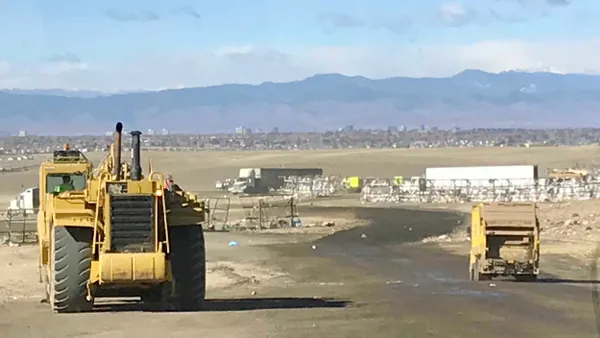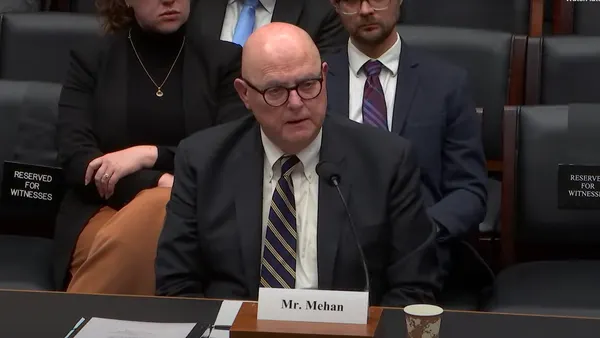With the surge in state and federal regulations placing a spotlight on landfills to address PFAS, landfill operators have a challenging decision when identifying the appropriate technologies to implement for PFAS management. This article provides an overview of some new available PFAS destruction technologies and compares them to the traditional removal and disposal options. Landfills across the US are increasingly adopting PFAS destruction technologies recognizing their immediate value to risk management relating to increasing regional regulations and waste disposal rates.
3 PFAS Destruction Solutions
1. Electrochemical Oxidation (EOx)
Electrochemical oxidation (EOx) of PFAS involves passing an electrical current through a liquid solution to mineralize PFAS compounds at the anode surface. Advances in EOx technology from companies like Aclarity have successfully scaled low energy EOx systems in the field and significantly lowered energy usage to below 10 kWh/m3 for 99% destruction. Low energy EOx is effective in treating C4-C9 PFAS compounds in full-scale volumes to below detection for both raw leachate and concentrates from foam fractionation, reverse osmosis, and evaporator processes. The EOx process operates at ambient settings eliminating the need for high pressures, high temperatures, or harsh caustic amendments. This approach offers a practical and feasible method for completely eradicating PFAS in landfill leachate.
2. Supercritical Water Oxidation (SCWO)
SCWO utilizes high pressure and high temperatures to push highly calorific waste into a supercritical state to oxidize and decompose PFAS molecules under extreme conditions. In the SCWO process employed by companies like 374Water and Revive Environmental, conditions typically exceed 374°C in temperature and 22.1 MPa in pressure requiring 1000+ kWh/m3 for 90% PFAS destruction. Energy recovery is possible with highly calorific waste to offset the substantial energy consumption associated with the process. Under these conditions, PFAS molecules undergo rapid oxidation and decomposition. The synergy of elevated temperature, pressure, and oxygen availability facilitates the breakdown of PFAS compounds. SCWO exhibits significant potential for PFAS treatment. Its application necessitates specialized equipment and meticulous control of operational parameters while balancing energy consumption and recovery.
3. Hydrothermal Alkaline Process (HALT)
HALT, developed by companies like Aquagga, relies on high temperature, compressed water along with an added chemical caustic reagent to break the strong carbon-fluorine bonds that hold PFAS together. The process requires high levels of energy to heat more than 350°C in order for the process to occur. Energy consumed is ~1 kWh per gallon. The efficacy of the process in effectively destroying and defluorinating numerous PFAS species has been previously established, contingent upon adequate residence time (≫ 30 min) and NaOH loading (∼5 M-NaOH). The extended residence times necessitated in batch reactors have posed a challenge to the scalability of this technology.
Five PFAS Removal and Disposal Options
1. Granular Activated Carbon (GAC)
GAC can be used for effective PFAS removal in landfill leachate when employed within a larger treatment process. Due to its high surface area and affinity for organic compounds, GAC effectively adsorbs most PFAS molecules. Factors like contact time, background organics, temperature, and pH influence GAC's adsorption capacity, with longer contact times and higher temperatures generally enhancing removal efficiency. Despite its versatility in treating various leachate types, GAC is a consumable material, necessitating frequent disposal or regeneration to prevent potential PFAS re-release.
2. Foam Fractionation
Foam Fractionation is a separation technique utilizing PFAS compounds' surface-active properties. It involves creating foam in leachate by introducing air or gas, forming a stable foam layer where PFAS compounds concentrate due to their hydrophobic nature. The process can achieve high concentration factors, sometimes up to 100,000x. Foam fractionation necessitates precise control of parameters like pH, temperature, and foam-promoting agents, and its efficiency is influenced by PFAS compound characteristics favoring longer chains. The produced foamate requires a disposal step; landfill operators need to address disposing of the concentrated PFAS and create an action plan for PFAS disposal post-concentration.
3. Deep Well Injection
This method involves injecting PFAS waste deep underground in wells drilled in porous geological formations. While it can mitigate PFAS, some wells may not accept PFAS waste, and associated transportation costs may be prohibitive. Questions surround its viability and true environmental cost, raising concerns about whether it effectively removes PFAS from the environment.
4. Solidification
Solidification involves mixing PFAS-contaminated material with binders such as cement to create a stable, less mobile solid matrix. This minimizes the risk of PFAS spreading, allowing for controlled management and disposal. Solidification can be done cost effectively with highly concentrated PFAS in small volumes. Some question the leachability of the PFAS from the porous cement, deferring the problem instead of addressing it effectively considering the PFAS will outlive the landfills.
5. Incineration
Incineration above 1400 degrees C has been shown to break down PFAS compounds. There are questions regarding potential PFAS escape into the atmosphere. The US EPA has considered imposing a federal ban on PFAS incineration, with some states and the Department of Defense previously implementing such bans. This shift highlights the need for alternative methods to address PFAS contamination effectively.
Conclusion
Management of PFAS in landfill leachate is an increasingly difficult task due to rising regulatory oversight, disposal costs, and compliance demands from local and federal governments. The industry has rapidly responded to deploy PFAS separation, concentration, and destruction demonstration projects to effectively manage leachate and has begun adopting combinations of technologies at full-scale. Organizations are choosing to deploy site-specific treatment processes by evaluating daily volumes, influent and target effluent PFAS compound concentrations, background water characteristics, and regional requirements. Though some solutions are more mature than others, on-site PFAS destruction has quickly become an affordable and available option for leachate management. Employing PFAS destruction opens opportunities such as creating new revenue streams and reduces chain of custody risk with the elimination of PFAS waste trucking.
Elegantly designed low energy electrochemical oxidation is proving to be a compelling alternative to traditional approaches. With its low energy demand, high destruction rates, and simplistic, fully automated design with little operations/maintenance required, it allows for turnkey on-site PFAS destruction and can accommodate site variability with ease.
For those interested in PFAS destruction technology, request a complimentary PFAS Destruction Evaluation here.
About the Author
Julie Bliss Mullen, CEO of Aclarity, invented Aclarity's primary technology as a PhD Candidate at UMass Amherst where she researched innovative water treatment technologies. Previously, she worked at the US EPA's Drinking Water Unit in Region 1 in engineering and policy development. Julie holds degrees in Environmental Engineering and Environmental & Sustainability Studies from Worcester Polytechnic Institute. She has been recognized as a 2019 Forbes 30 Under 30 recipient in Science, 2019 Lemelson-MIT Award recipient, and 2018 Innovator of the Year by NEWIN/NEWEA.
About Aclarity
Aclarity’s mission is to destroy PFAS forever. The team develops, deploys, and services full-scale proprietary electrochemical oxidation systems to permanently destroy PFAS chemicals in liquid waste for industrial facilities globally.










